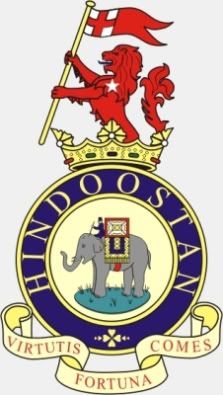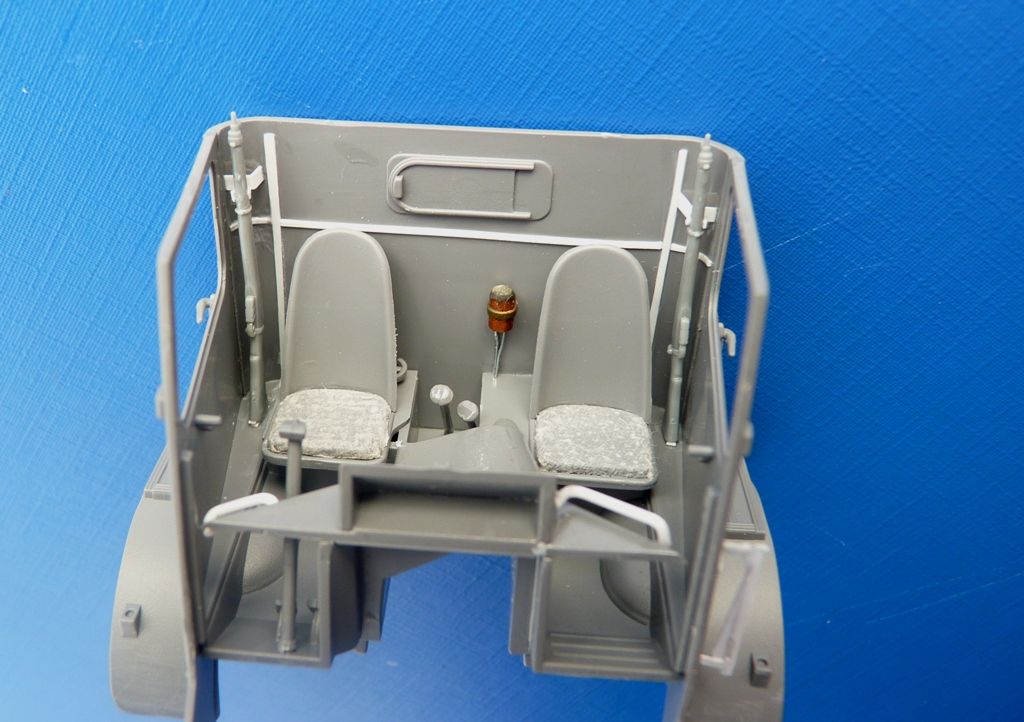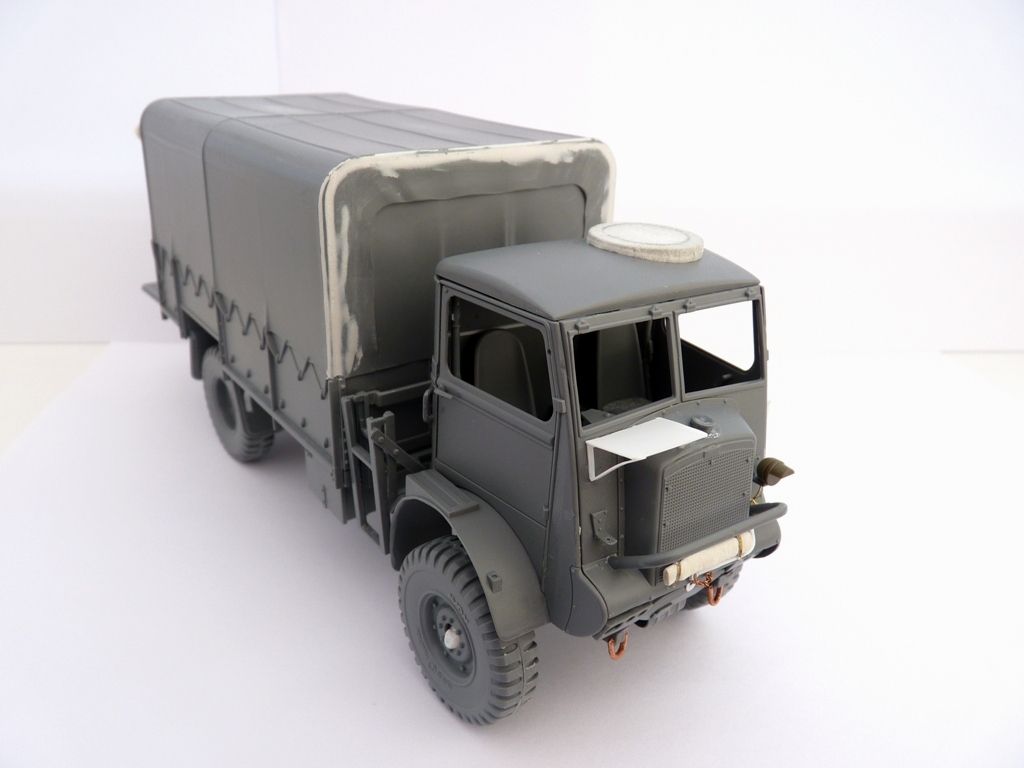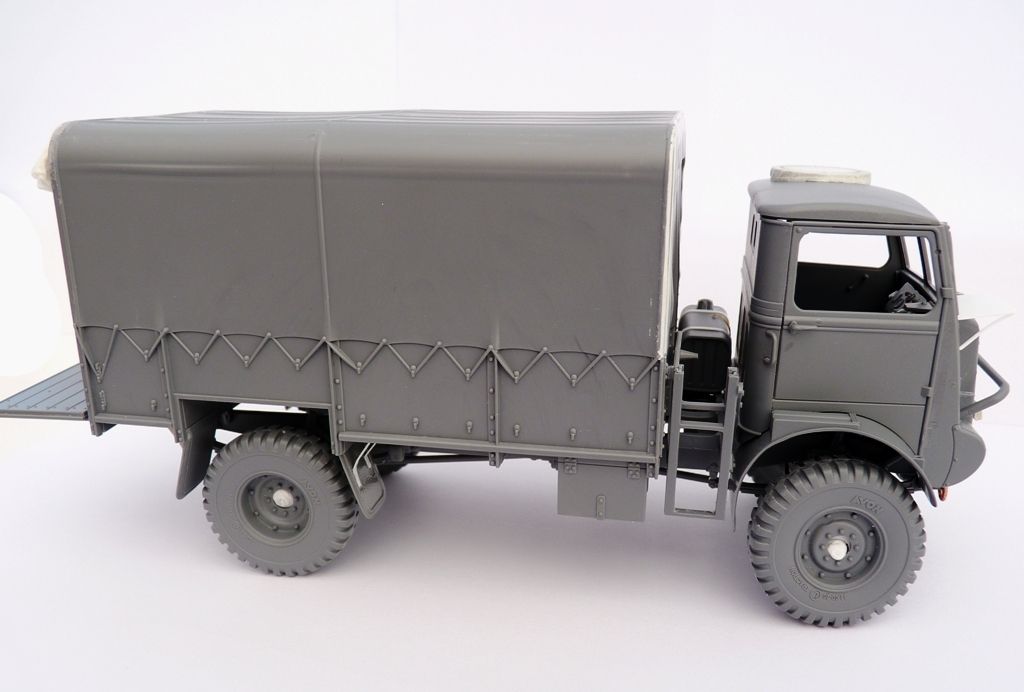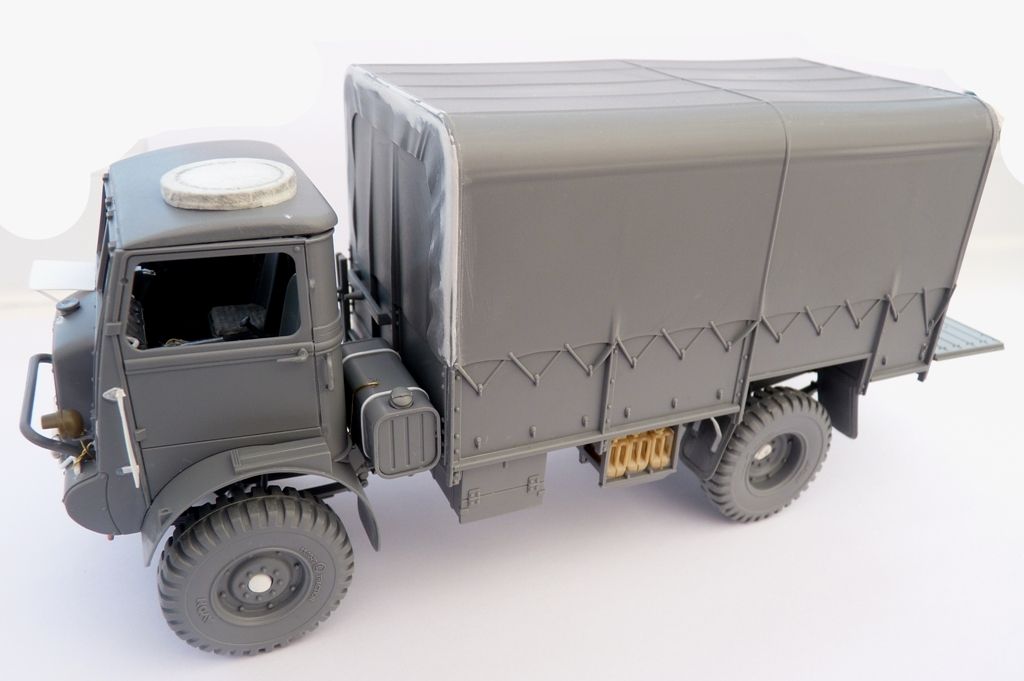Post by mshackleton on Jan 29, 2014 9:51:13 GMT -5
Marmon-Herrington Mk.I South African Reconnaissance Vehicle
IBG Models

Catalogue no: 35021
Scale: 1.35
Availability: released
Rating: 3 stars
Media: injection-moulded plastic including one clear, etched brass
Reviewed by: Michael Shackleton
Review type: in box
Introduction
This is one of those vehicles that a few years ago we never thought we would see in plastic. It has been dealt with in resin at various times, but the plastic manufacturers are now looking at less mainstream subjects to plug the holes in the market.
British subjects seem to be the flavour of the month and this could loosely be called British as it is a British Commonwealth vehicle designed and built in South Africa. The Polish company, IBG Models, have now released some plastic versions with more to follow. Here we concentrate on the original Mk.I Marmon-Herrington.
History
In 1938, the South African government initiated development of an armoured car. As the country did not have an automotive industry to speak of, many components of the vehicle had to be imported. Chassis components were bought from Ford Canada, based on a Ford 3-ton truck chassis, and fitted with a four-wheel drive train produced by the American company Marmon-Herrington (hence the designation), UK-made armament (with the exception of the US-made Browning machine guns) and armour plate produced by the South African Iron & Steel Industrial Corporation, ISCOR. Final assembly was done by the local branch of the Dorman Long company, among others.
The first version, the ‘South African Reconnaissance Vehicle’ Mk.I, entered service in 1940. It was a long-wheelbase, four-wheeled chassis with drive to only the rear axle. It was armed with two Vickers machine guns, one in a conical turret and the other in the left-hand side of the hull. There were two large access doors in the rear. It saw brief action against Italian forces in the Western Desert and was thereafter relegated to training use. Some were given to Greece and fought during the German invasion of Greece, but proved inadequate against the Germans.
It was replaced by the similar looking Mk.II with all-wheel drive. Early vehicles carried the same armament as Mk.I. Late production vehicles received an octagonal turret with Boys anti-tank rifle and Bren MG. There were pintle mountings for Vickers MG and Bren MG (the latter was rarely carried).
The Kit
Upon opening the box, you are presented with six assorted cellophane and plastic bags containing a clear sprue, seven main sprues – some large, some small – separate tyres and turret, a photo-etch fret, instructions and a small decal sheet. All of the sprues have identification letters and part numbers.
The contents are:
1. Sprue A: the hull floor, roof, bonnet top plates, rear plate, some tools and boxes, roof frame.

2. Sprue B: bonnet doors, turret doors and ring, engine parts, steering wheel and dashboard, windscreen parts, silencer, brake and transmission parts.

3.Sprue C (2 off): wheels, wheel carriers, hooks, seat cushions, battery.

4.Sprue Ca: spare wheel, radio, seat backs, other small parts.
5.Sprue Cb (2 off): Vickers machine gun.
6.Sprue Cd: small detail parts for engine and suspension.
7.Sprue D: clear parts – headlight lenses and windscreen glass.

8.Sprue E: body sides, suspension springs, front mudguards, more chassis parts.

9.Etch brass fret: radio bars, various handles and straps.

10. Decals.
Instructions
The 20-page A4 instruction sheet is printed in black, no colour. The construction images are mostly CAD drawings and, although quite grey and a little dark, are clear enough and easy to follow. There are no less than 48 stages in the build process which are quite logical. Light grey numbered triangles in each step show you what each step should look like when complete. Colours are noted using lettered triangles relating to a key on page 1 which only relates to the 'colour profiles' at the end of the instructions. There is no guide within the instructions as to what any other colours should be, e.g. the interior, or the engine.
The Build
The parts are all crisply moulded in grey styrene and generally display a high degree of detail. The hull exterior is very well moulded, with delicate weld marks, rivets and bolts all nicely reproduced.

I haven't seen an IBG kit before. I have always had the impression that IBG moulding wasn't very delicate and a bit clunky. This kit certainly is not like this. A lot of the body parts are commendably thin. For instance, the main side doors have a subtle curve on them (they are not flat as you might expect) and are quite beautiful. It's a shame they have no detail on the inside faces though. The door frames on the main side pieces are very thin, so be careful when cutting them from the sprue. One of my frames was broken.
The construction starts with the wheels. The wheels and tyres are moulded in styrene in two pieces. The tread pattern is a little shallow but the pressed steel wheels look good.
We then have quite a few steps showing how to bend and fold a lot of the photo-etch parts. This fret contains the cage for the No.19 radio, handles for the armoured windscreen, a hanger for the silencer, headphone headbands and tie-down straps. I suppose the idea is to get the most fiddly bits out of the way first so you can stop tearing your hair out and enjoy the rest of the build! The body roof is then built with an interior frame and a head cushion added. Then the front engine doors are built from three pieces each! Inside detail is included here which makes it even more strange not to have inside detail on the side doors.
The engine is well represented, with an intricately cast block. The only items really missing are the various ignition leads that would be easy to add. Of course, if you model the car with the bonnet closed, there is no real need to include this. You will have to include the radiator if the front engine doors are modelled open.
The chassis is built from several parts including separate side rails and cross members. Make sure everything is square when building this. Leaf springs, drive shaft and transaxles are then added plus wheel carriers/brake drums.
Attention turns to the floor of the hull. Here we have the only ejector marks worth noting – all on the underside and inside the rear mudguards. The inclusion of a detailed interior is a nice touch. The intricate radio assembly even includes headphones. The detailed interior just calls out for leaving the doors and hatches open in order to see the interior. As mentioned above, there are no colour instructions given for this or the engine. Also, the insides of the driver's/co-driver's doors don't have any detail. I wonder why IBG didn't go the extra mile to provide this detail when the interior is so good?
The conical turret is nicely moulded but has some vertical join lines that will need careful clean up at 4 o'clock and 8 o'clock. The completed floor and engine can then be added to the chassis.
The body sides are then detailed up with various small items such as the tools, second Vickers in the left hull side, front mudguards, the aforementioned side doors and an aerial mount. These are then added together with the front bulkhead, instrument panel, steering wheel and top bonnet frame, topped off with the bonnet itself and the windscreen frame. No decals are provided for the instrument panel. Alternative hinges are provided depending on whether the front engine doors are modelled open or closed.
The hull rear panel can now go on. The doors in my kit were warped – they should be flat. Some gentle heating in hot water should flatten them out. Clear parts are provided for the driver's/co-driver's openable visors. The fronts of the front mudguards are joined by a delicate bonnet frame and this is added next. Again, be careful when cutting it away from the numerous sprue gates. Some very tiny and painful photo-etch hooks have to be added – eight per side of the hull! Finally, the roof and turret completes the build.
Finally, IBG provide diagrams showing the model in open and closed configurations.
Painting and markings
Two different South African colour schemes are provided: one single colour scheme from an unidentified unit and an alternative two-tone camouflage scheme used in the Eastern Transvaal region of South Africa, both dated 1940.
Competition
Listed on IBG's website are the following versions:
IBG 35022 1/35 Marmon-Herrington Mk.II Middle East type;
IBG 35023 1/35 Marmon-Herrington Mk.II Mobile Field Force type;
IBG 35024 1/35 Marmon-Herrington (e) Panzerspahwagen.
Mirror Models have announced a Mk.II of their own. IMA from Hong Kong have a resin Breda-armed Mk.II which has been around a few years now.
Conclusions
I have to admit to being very pleasantly surprised by this kit. This model is well planned and engineered resulting in a simple but well detailed kit straight from the box. It is well-engineered with crisp moulding. Flash and seam lines are minimal, and even ejection pin marks are mostly absent. I cannot speak for the fit of parts as I haven’t put it together. The only downsides are lack of detail on the inside faces of the side doors, warping in places, no instrument decals, no interior colour guidance.
I think this kit is enough to keep the more experienced modeller happy and the novice will be able to produce a nice looking reproduction straight from the box.
Highly recommended.
This kit was provided by IBG Models as a review sample.
References
The only good reference I know of is the recent book from William Marshall: Marmon Herrington. A History of the South African Reconnaissance Car from Model Centrum Progres, ISBN 978-83-60672-4. Funnily enough, the exclusive distributors are IBG (www.ibgmodels.com/S1.htm)! This gives a detailed history of all MH armoured cars from Mk.I through to Mk.IV and includes many photos, plans, profiles and walkarounds.
If you want the instructions posted up, I'll do that if there is a demand. Let me know.
IBG Models

Catalogue no: 35021
Scale: 1.35
Availability: released
Rating: 3 stars
Media: injection-moulded plastic including one clear, etched brass
Reviewed by: Michael Shackleton
Review type: in box
Introduction
This is one of those vehicles that a few years ago we never thought we would see in plastic. It has been dealt with in resin at various times, but the plastic manufacturers are now looking at less mainstream subjects to plug the holes in the market.
British subjects seem to be the flavour of the month and this could loosely be called British as it is a British Commonwealth vehicle designed and built in South Africa. The Polish company, IBG Models, have now released some plastic versions with more to follow. Here we concentrate on the original Mk.I Marmon-Herrington.
History
In 1938, the South African government initiated development of an armoured car. As the country did not have an automotive industry to speak of, many components of the vehicle had to be imported. Chassis components were bought from Ford Canada, based on a Ford 3-ton truck chassis, and fitted with a four-wheel drive train produced by the American company Marmon-Herrington (hence the designation), UK-made armament (with the exception of the US-made Browning machine guns) and armour plate produced by the South African Iron & Steel Industrial Corporation, ISCOR. Final assembly was done by the local branch of the Dorman Long company, among others.
The first version, the ‘South African Reconnaissance Vehicle’ Mk.I, entered service in 1940. It was a long-wheelbase, four-wheeled chassis with drive to only the rear axle. It was armed with two Vickers machine guns, one in a conical turret and the other in the left-hand side of the hull. There were two large access doors in the rear. It saw brief action against Italian forces in the Western Desert and was thereafter relegated to training use. Some were given to Greece and fought during the German invasion of Greece, but proved inadequate against the Germans.
It was replaced by the similar looking Mk.II with all-wheel drive. Early vehicles carried the same armament as Mk.I. Late production vehicles received an octagonal turret with Boys anti-tank rifle and Bren MG. There were pintle mountings for Vickers MG and Bren MG (the latter was rarely carried).
The Kit
Upon opening the box, you are presented with six assorted cellophane and plastic bags containing a clear sprue, seven main sprues – some large, some small – separate tyres and turret, a photo-etch fret, instructions and a small decal sheet. All of the sprues have identification letters and part numbers.
The contents are:
1. Sprue A: the hull floor, roof, bonnet top plates, rear plate, some tools and boxes, roof frame.

2. Sprue B: bonnet doors, turret doors and ring, engine parts, steering wheel and dashboard, windscreen parts, silencer, brake and transmission parts.

3.Sprue C (2 off): wheels, wheel carriers, hooks, seat cushions, battery.

4.Sprue Ca: spare wheel, radio, seat backs, other small parts.
5.Sprue Cb (2 off): Vickers machine gun.
6.Sprue Cd: small detail parts for engine and suspension.
7.Sprue D: clear parts – headlight lenses and windscreen glass.

8.Sprue E: body sides, suspension springs, front mudguards, more chassis parts.

9.Etch brass fret: radio bars, various handles and straps.

10. Decals.
Instructions
The 20-page A4 instruction sheet is printed in black, no colour. The construction images are mostly CAD drawings and, although quite grey and a little dark, are clear enough and easy to follow. There are no less than 48 stages in the build process which are quite logical. Light grey numbered triangles in each step show you what each step should look like when complete. Colours are noted using lettered triangles relating to a key on page 1 which only relates to the 'colour profiles' at the end of the instructions. There is no guide within the instructions as to what any other colours should be, e.g. the interior, or the engine.
The Build
The parts are all crisply moulded in grey styrene and generally display a high degree of detail. The hull exterior is very well moulded, with delicate weld marks, rivets and bolts all nicely reproduced.

I haven't seen an IBG kit before. I have always had the impression that IBG moulding wasn't very delicate and a bit clunky. This kit certainly is not like this. A lot of the body parts are commendably thin. For instance, the main side doors have a subtle curve on them (they are not flat as you might expect) and are quite beautiful. It's a shame they have no detail on the inside faces though. The door frames on the main side pieces are very thin, so be careful when cutting them from the sprue. One of my frames was broken.
The construction starts with the wheels. The wheels and tyres are moulded in styrene in two pieces. The tread pattern is a little shallow but the pressed steel wheels look good.
We then have quite a few steps showing how to bend and fold a lot of the photo-etch parts. This fret contains the cage for the No.19 radio, handles for the armoured windscreen, a hanger for the silencer, headphone headbands and tie-down straps. I suppose the idea is to get the most fiddly bits out of the way first so you can stop tearing your hair out and enjoy the rest of the build! The body roof is then built with an interior frame and a head cushion added. Then the front engine doors are built from three pieces each! Inside detail is included here which makes it even more strange not to have inside detail on the side doors.
The engine is well represented, with an intricately cast block. The only items really missing are the various ignition leads that would be easy to add. Of course, if you model the car with the bonnet closed, there is no real need to include this. You will have to include the radiator if the front engine doors are modelled open.
The chassis is built from several parts including separate side rails and cross members. Make sure everything is square when building this. Leaf springs, drive shaft and transaxles are then added plus wheel carriers/brake drums.
Attention turns to the floor of the hull. Here we have the only ejector marks worth noting – all on the underside and inside the rear mudguards. The inclusion of a detailed interior is a nice touch. The intricate radio assembly even includes headphones. The detailed interior just calls out for leaving the doors and hatches open in order to see the interior. As mentioned above, there are no colour instructions given for this or the engine. Also, the insides of the driver's/co-driver's doors don't have any detail. I wonder why IBG didn't go the extra mile to provide this detail when the interior is so good?
The conical turret is nicely moulded but has some vertical join lines that will need careful clean up at 4 o'clock and 8 o'clock. The completed floor and engine can then be added to the chassis.
The body sides are then detailed up with various small items such as the tools, second Vickers in the left hull side, front mudguards, the aforementioned side doors and an aerial mount. These are then added together with the front bulkhead, instrument panel, steering wheel and top bonnet frame, topped off with the bonnet itself and the windscreen frame. No decals are provided for the instrument panel. Alternative hinges are provided depending on whether the front engine doors are modelled open or closed.
The hull rear panel can now go on. The doors in my kit were warped – they should be flat. Some gentle heating in hot water should flatten them out. Clear parts are provided for the driver's/co-driver's openable visors. The fronts of the front mudguards are joined by a delicate bonnet frame and this is added next. Again, be careful when cutting it away from the numerous sprue gates. Some very tiny and painful photo-etch hooks have to be added – eight per side of the hull! Finally, the roof and turret completes the build.
Finally, IBG provide diagrams showing the model in open and closed configurations.
Painting and markings
Two different South African colour schemes are provided: one single colour scheme from an unidentified unit and an alternative two-tone camouflage scheme used in the Eastern Transvaal region of South Africa, both dated 1940.
Competition
Listed on IBG's website are the following versions:
IBG 35022 1/35 Marmon-Herrington Mk.II Middle East type;
IBG 35023 1/35 Marmon-Herrington Mk.II Mobile Field Force type;
IBG 35024 1/35 Marmon-Herrington (e) Panzerspahwagen.
Mirror Models have announced a Mk.II of their own. IMA from Hong Kong have a resin Breda-armed Mk.II which has been around a few years now.
Conclusions
I have to admit to being very pleasantly surprised by this kit. This model is well planned and engineered resulting in a simple but well detailed kit straight from the box. It is well-engineered with crisp moulding. Flash and seam lines are minimal, and even ejection pin marks are mostly absent. I cannot speak for the fit of parts as I haven’t put it together. The only downsides are lack of detail on the inside faces of the side doors, warping in places, no instrument decals, no interior colour guidance.
I think this kit is enough to keep the more experienced modeller happy and the novice will be able to produce a nice looking reproduction straight from the box.
Highly recommended.
This kit was provided by IBG Models as a review sample.
References
The only good reference I know of is the recent book from William Marshall: Marmon Herrington. A History of the South African Reconnaissance Car from Model Centrum Progres, ISBN 978-83-60672-4. Funnily enough, the exclusive distributors are IBG (www.ibgmodels.com/S1.htm)! This gives a detailed history of all MH armoured cars from Mk.I through to Mk.IV and includes many photos, plans, profiles and walkarounds.
If you want the instructions posted up, I'll do that if there is a demand. Let me know.








